Abstract
Three experiments are reported in which two pigeons were trained to detect differences in stimulus duration under varying levels of absolute rate of reinforcement. Two red stimuli, differing in duration, were arranged probabilistically on the center key of a three-key chamber. On completion of the center-key duration, the center keylight was extinguished and the two side keys were illuminated white. Correct responses were left-key pecks following the shorter duration and right-key pecks following the longer duration. In Experiment 1, relative rate of reinforcement for correct responses was held constant and absolute rate of reinforcement was varied in seven conditions from continuous reinforcement to a variable-interval 90-second schedule. In Experiment 2, relative rate of reinforcement was manipulated across three different absolute rates of reinforcement (continuous reinforcement, variable-interval 15-second, and variable-interval 45-second). Stimulus discriminability was unaffected by changes in absolute or relative rates of reinforcement. Experiment 3 showed that discriminability was also unaffected by arranging the same consequences (three-second blackout) for unreinforced correct responses and errors.
Full text
PDF
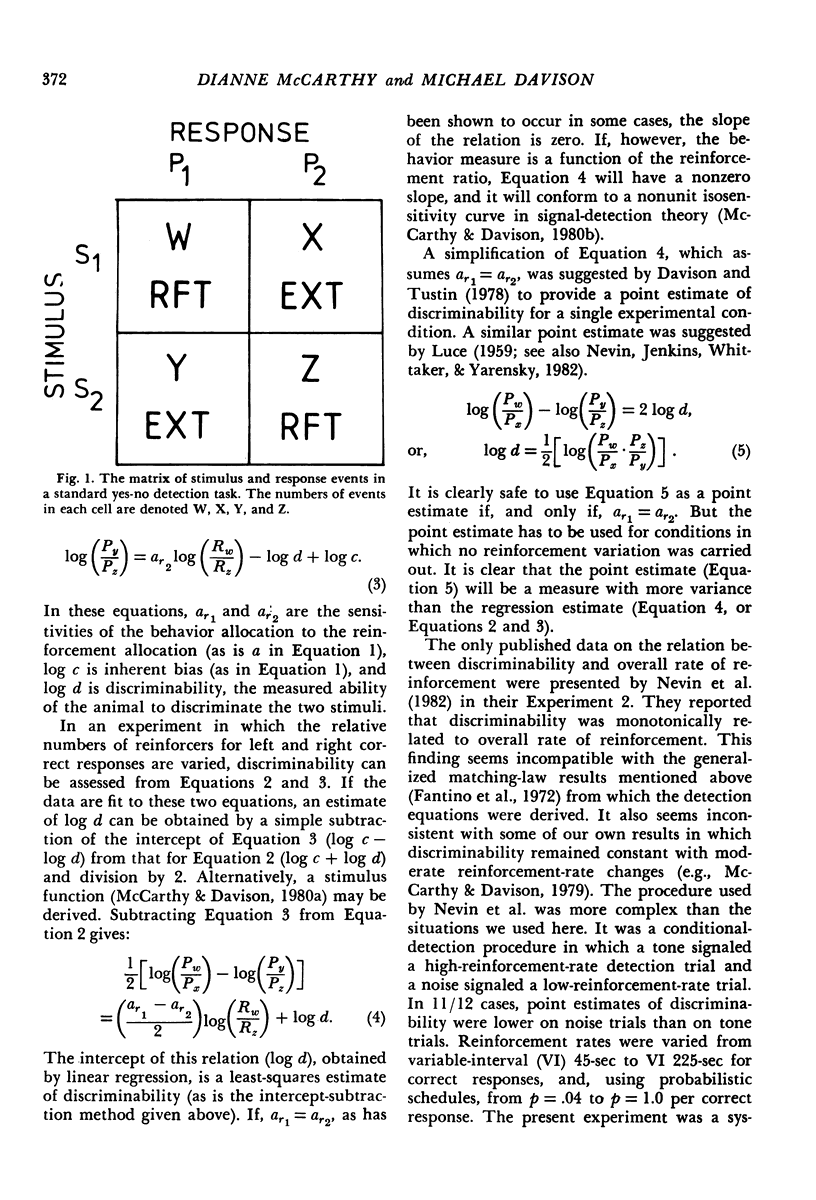
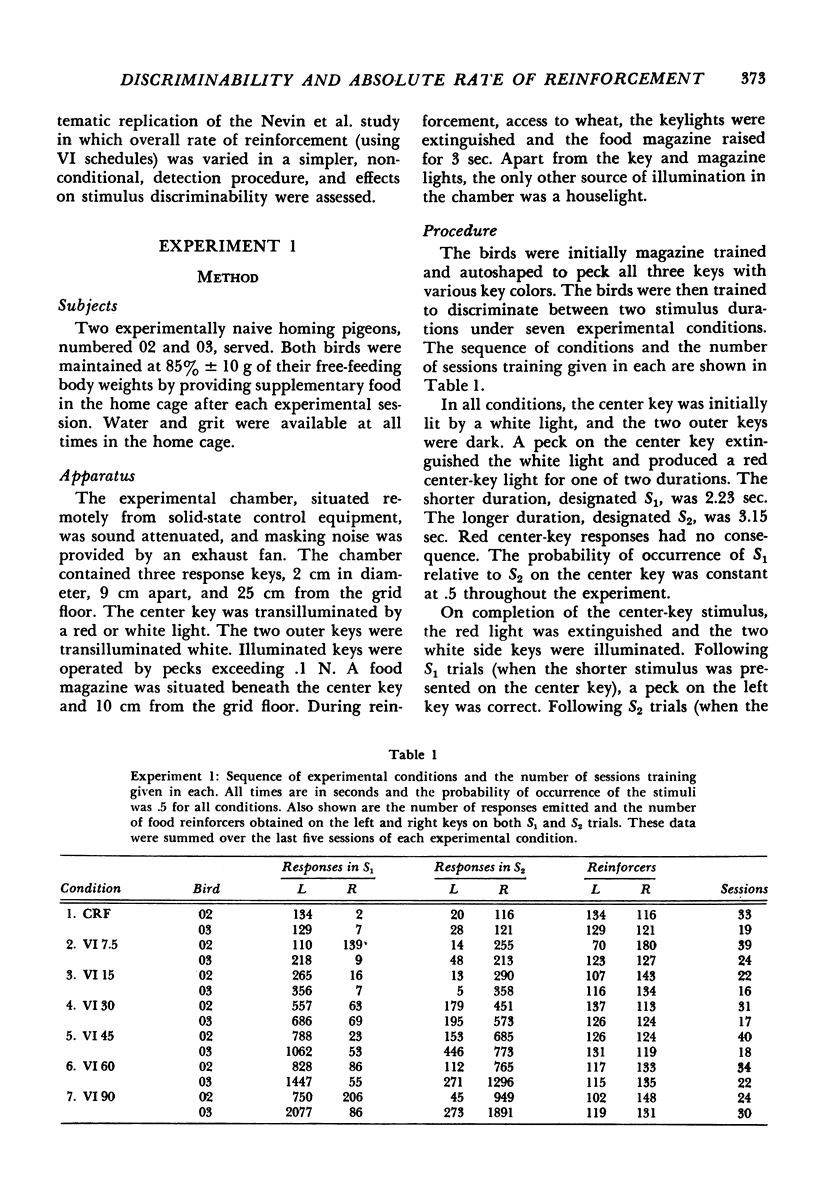
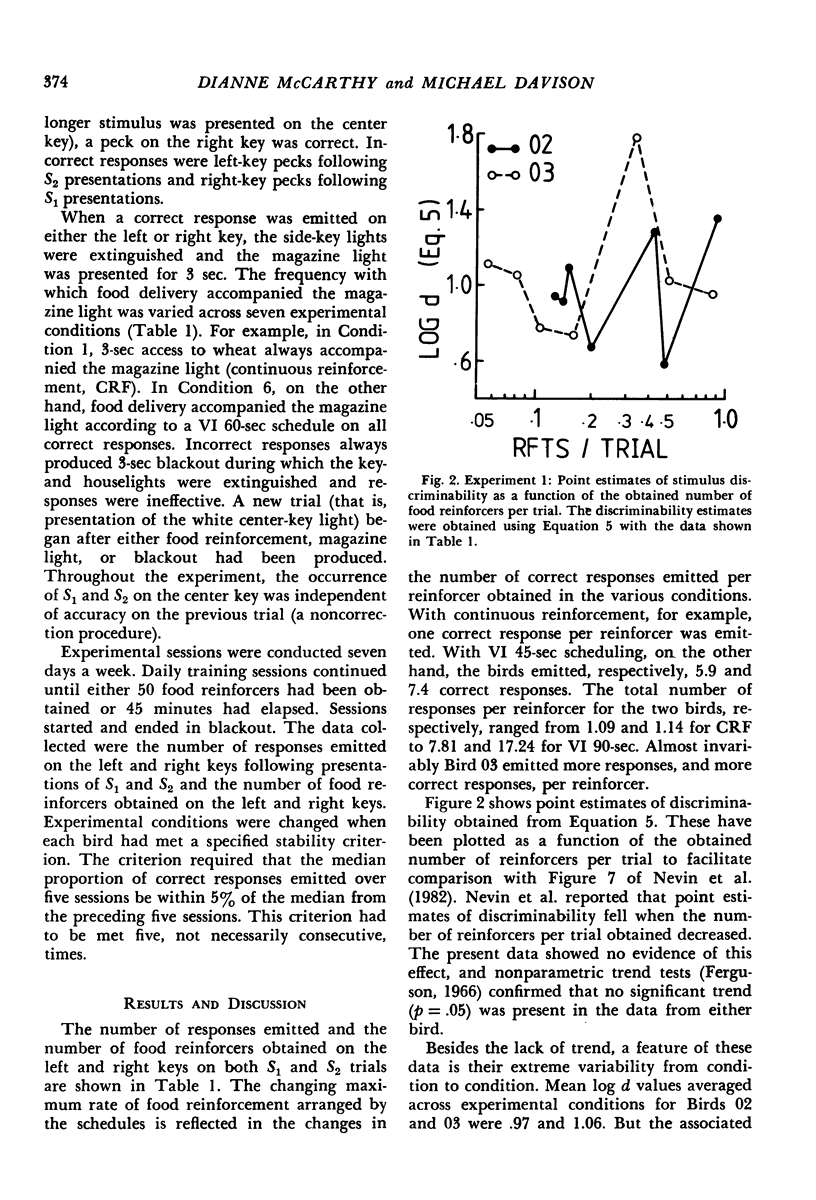
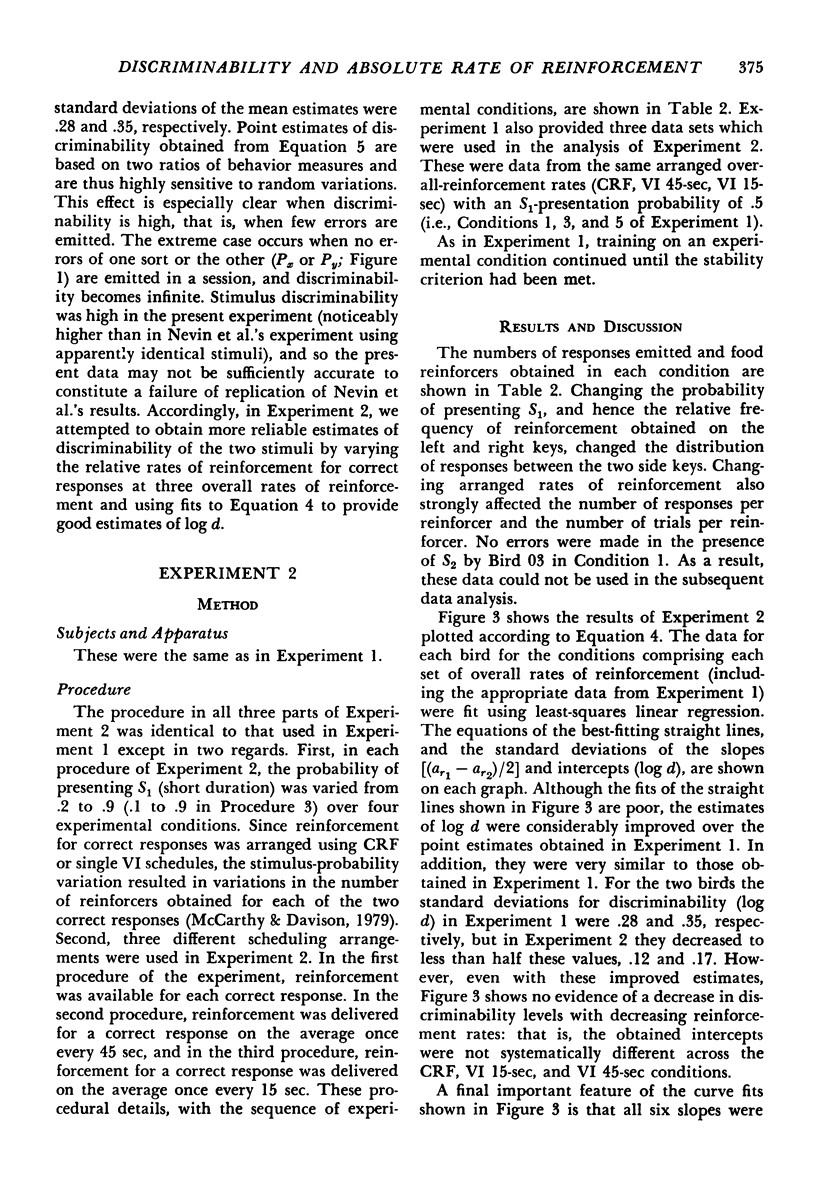
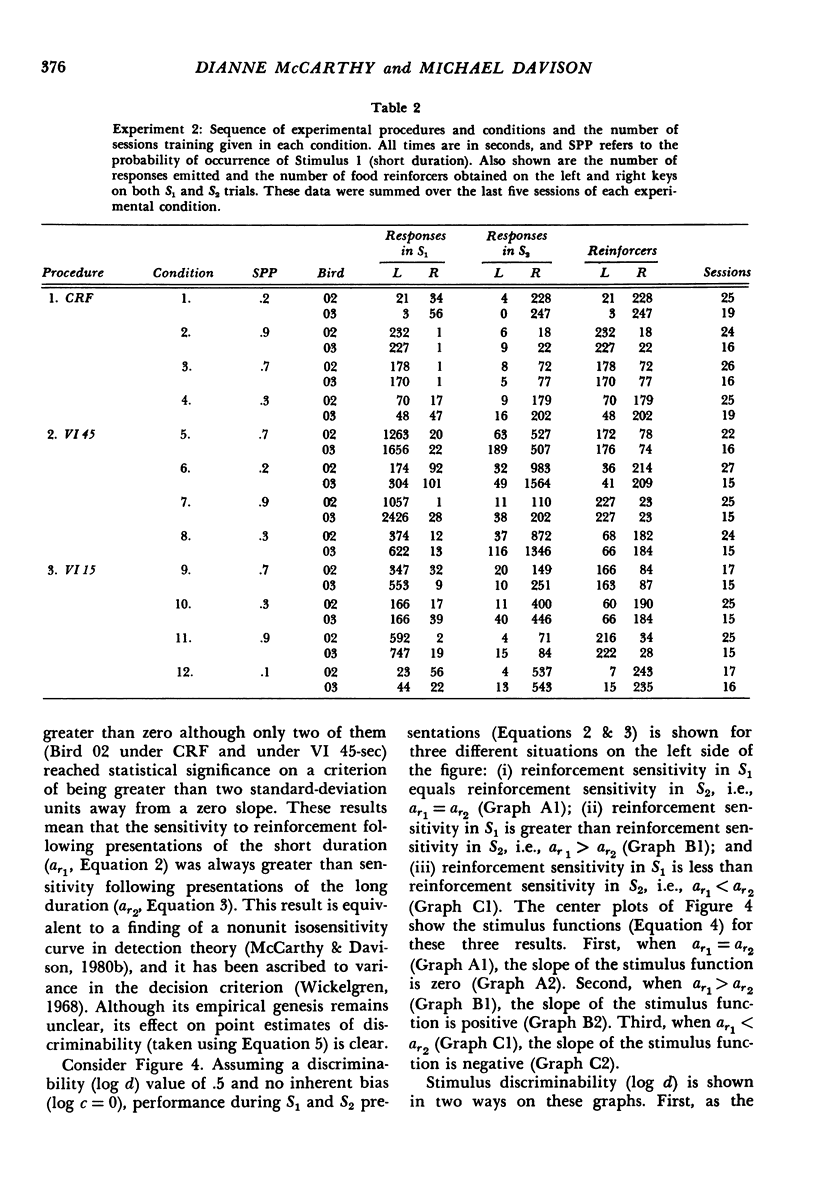
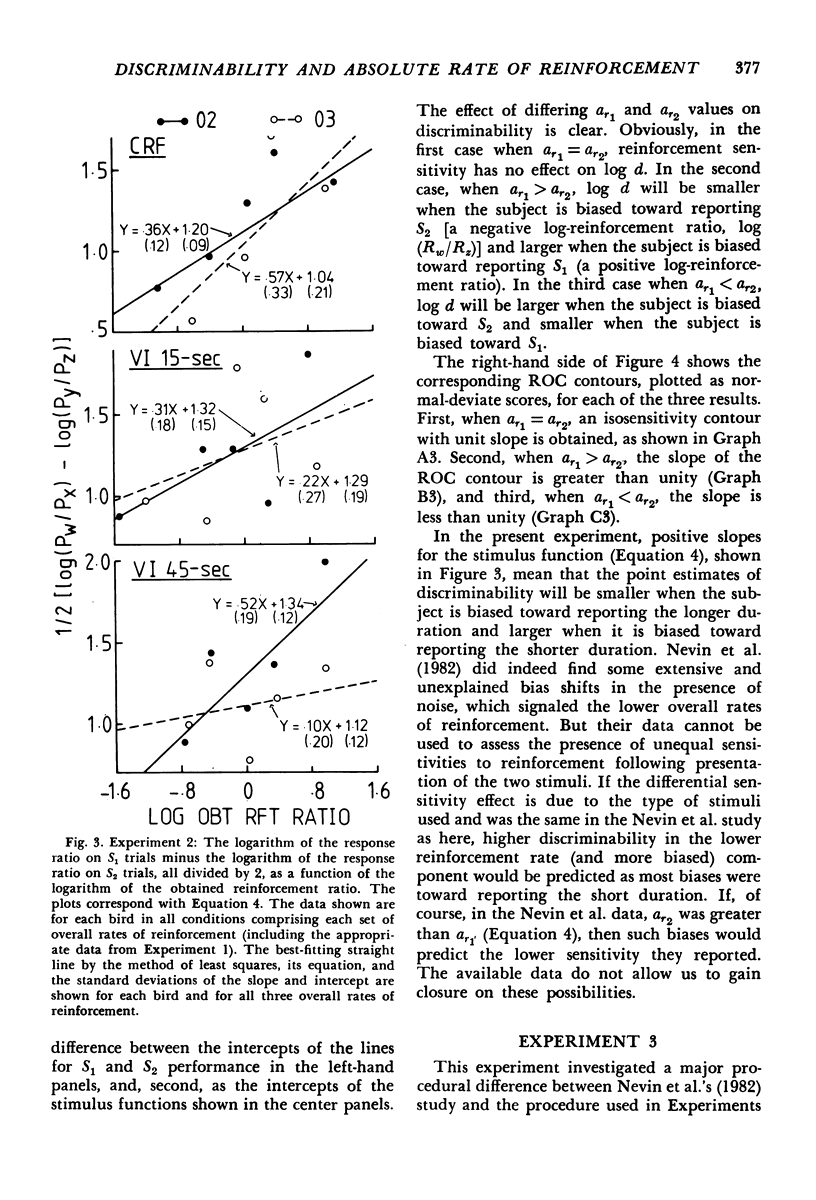
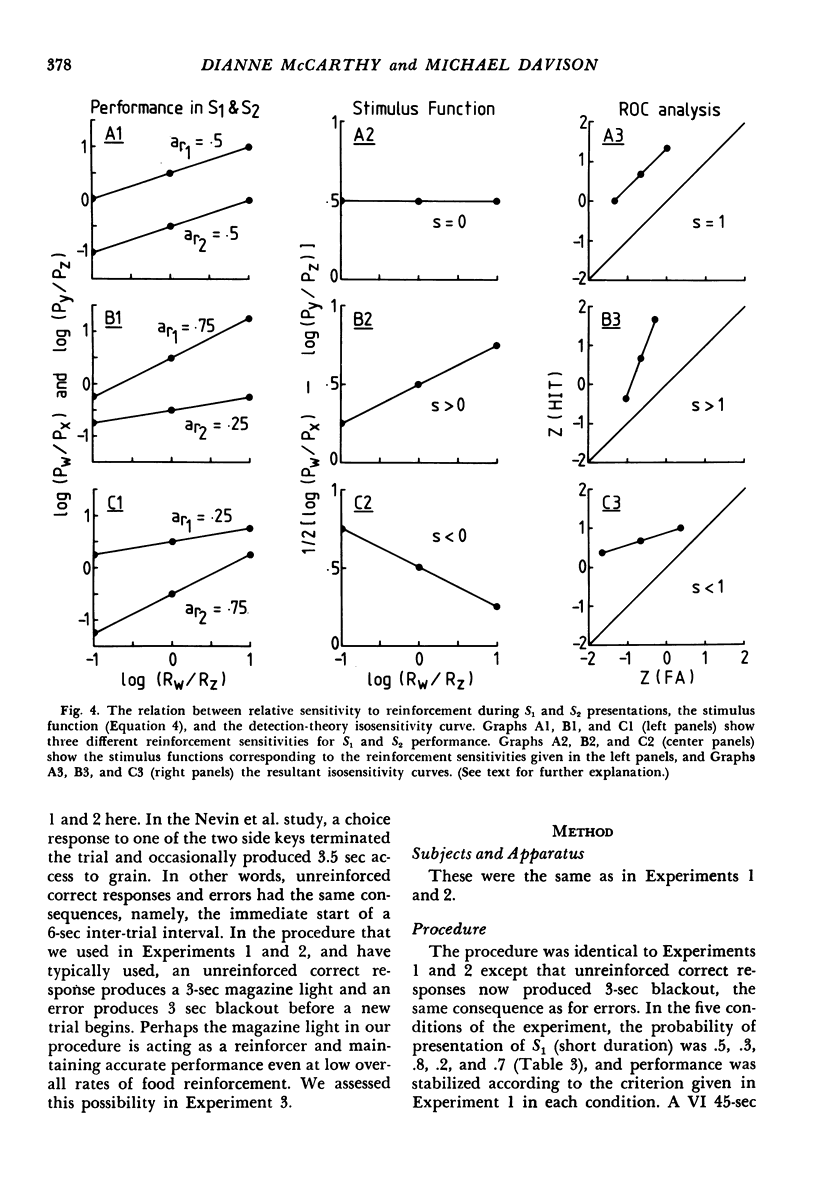
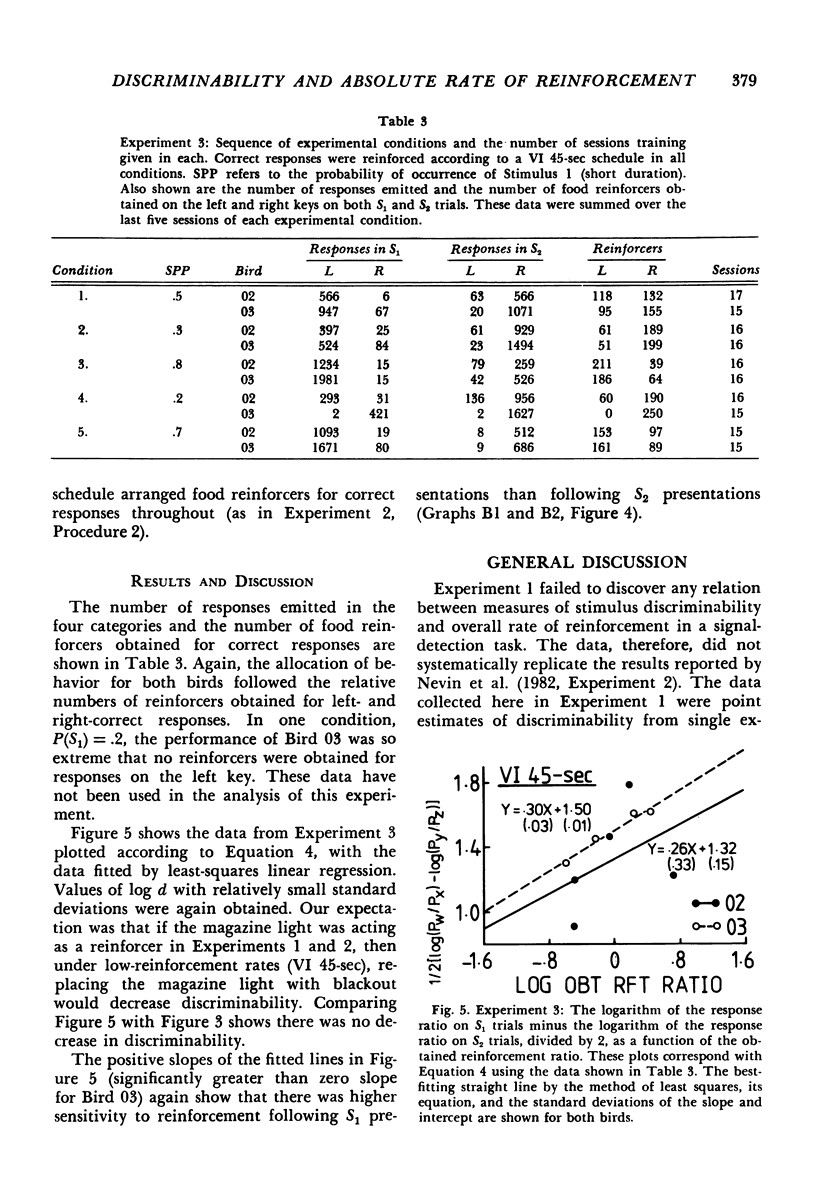
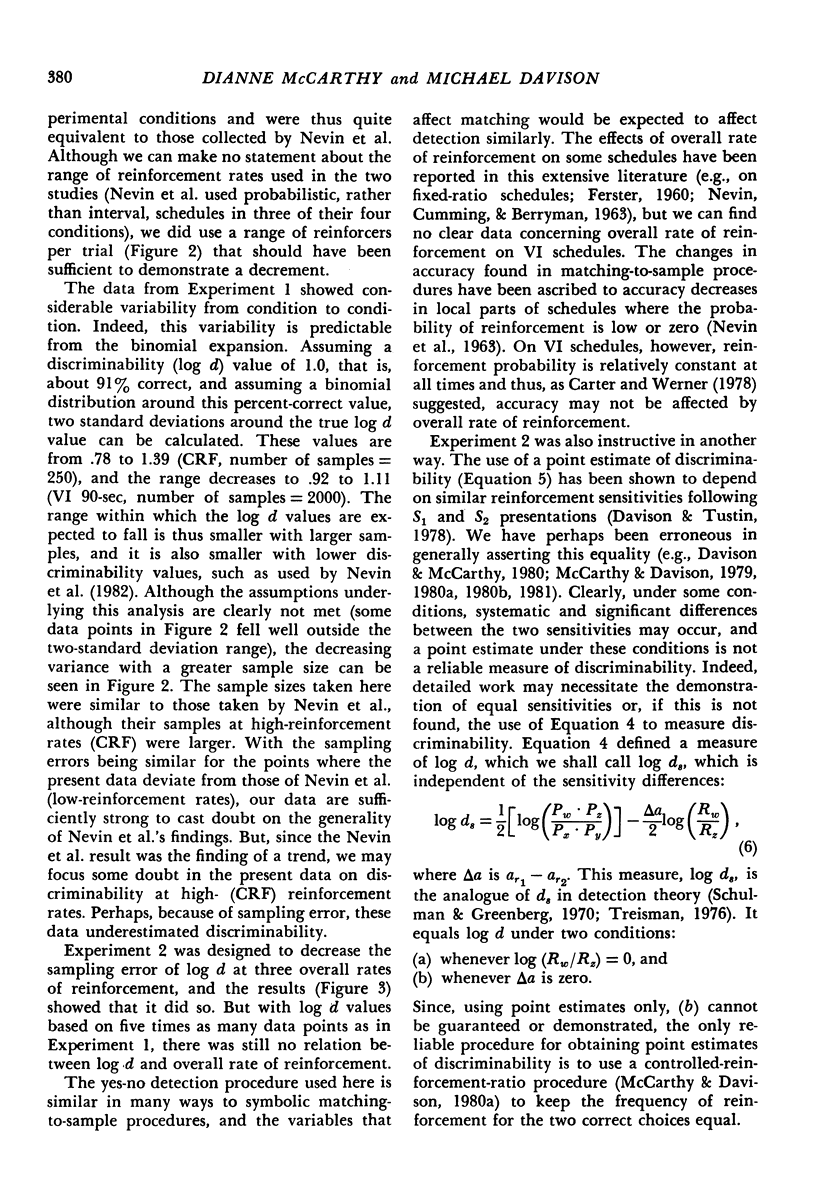
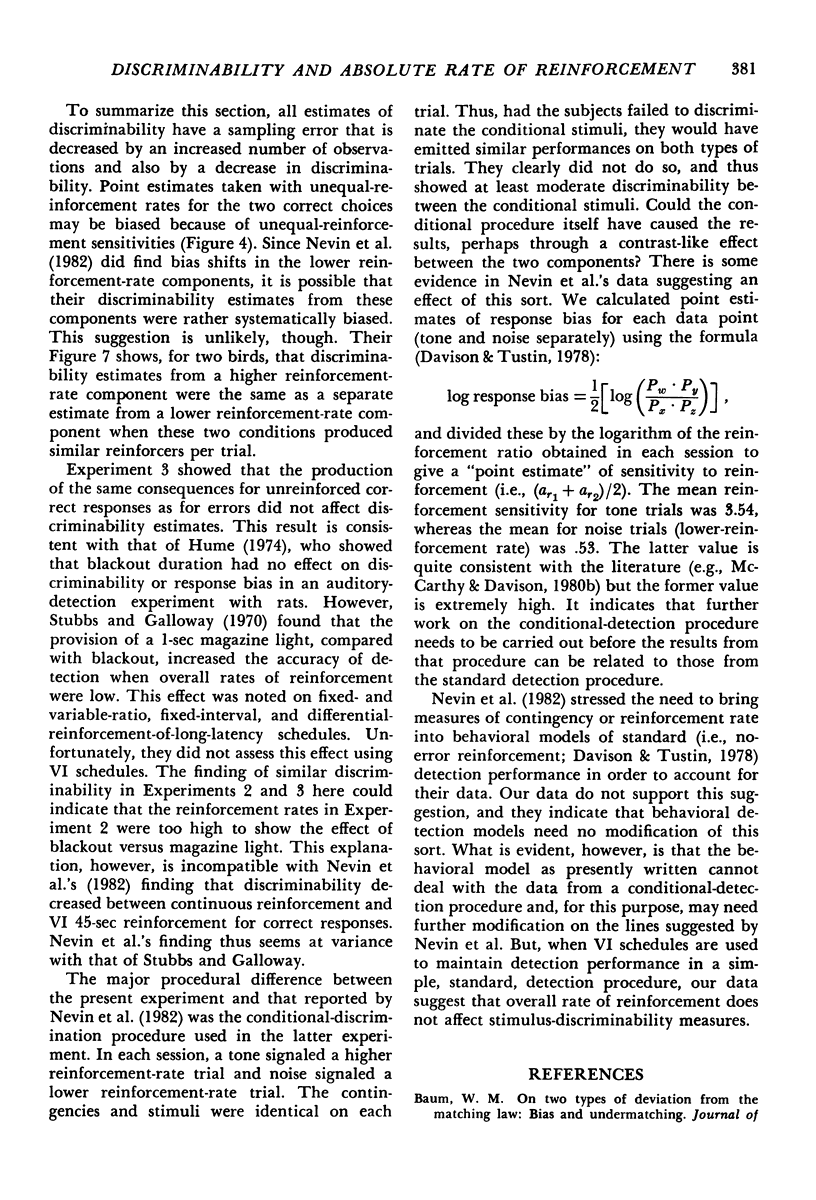

Selected References
These references are in PubMed. This may not be the complete list of references from this article.
- Carter D. E., Werner T. J. Complex learning and information processing by pigeons: a critical analysis. J Exp Anal Behav. 1978 May;29(3):565–601. doi: 10.1901/jeab.1978.29-565. [DOI] [PMC free article] [PubMed] [Google Scholar]
- Davison M. C., Tustin R. D. The relation between the generalized matching law and signal-detection theory. J Exp Anal Behav. 1978 Mar;29(2):331–336. doi: 10.1901/jeab.1978.29-331. [DOI] [PMC free article] [PubMed] [Google Scholar]
- Davison M., McCarthy D. Reinforcement for errors in a signal-detection procedure. J Exp Anal Behav. 1980 Jul;34(1):35–47. doi: 10.1901/jeab.1980.34-35. [DOI] [PMC free article] [PubMed] [Google Scholar]
- FERSTER C. B. Intermittent reinforcement of matching to sample in the pigeon. J Exp Anal Behav. 1960 Jul;3:259–272. doi: 10.1901/jeab.1960.3-259. [DOI] [PMC free article] [PubMed] [Google Scholar]
- Fantino E., Squires N., Delbrück N., Peterson C. Choice behavior and the accessibility of the reinforcer. J Exp Anal Behav. 1972 Jul;18(1):35–43. doi: 10.1901/jeab.1972.18-35. [DOI] [PMC free article] [PubMed] [Google Scholar]
- McCarthy D., Davison M. Independence of sensitivity to relative reinforcement rate and discriminability in signal detection. J Exp Anal Behav. 1980 Nov;34(3):273–284. doi: 10.1901/jeab.1980.34-273. [DOI] [PMC free article] [PubMed] [Google Scholar]
- McCarthy D., Davison M. On the discriminability of stimulus duration. J Exp Anal Behav. 1980 Mar;33(2):187–211. doi: 10.1901/jeab.1980.33-187. [DOI] [PMC free article] [PubMed] [Google Scholar]
- McCarthy D., Davison M. Signal probability, reinforcement and signal detection. J Exp Anal Behav. 1979 Nov;32(3):373–386. doi: 10.1901/jeab.1979.32-373. [DOI] [PMC free article] [PubMed] [Google Scholar]
- McCarthy D., Davison M. Towards a behavioral theory of bias in signal detection. Percept Psychophys. 1981 Apr;29(4):371–382. doi: 10.3758/bf03207347. [DOI] [PubMed] [Google Scholar]
- NEVIN J. A., CUMMING W. W., BERRYMAN T. Ratio reinforcement of matching behavior. J Exp Anal Behav. 1963 Apr;6:149–154. doi: 10.1901/jeab.1963.6-149. [DOI] [PMC free article] [PubMed] [Google Scholar]
- Nevin J. A., Jenkins P., Whittaker S., Yarensky P. Reinforcement contingencies and signal detection. J Exp Anal Behav. 1982 Jan;37(1):65–79. doi: 10.1901/jeab.1982.37-65. [DOI] [PMC free article] [PubMed] [Google Scholar]
- Stubbs A., Galloway W. D. Conditioned reinforcement and discrimination performance. J Exp Anal Behav. 1970 Jul;14(1):23–31. doi: 10.1901/jeab.1970.14-23. [DOI] [PMC free article] [PubMed] [Google Scholar]


